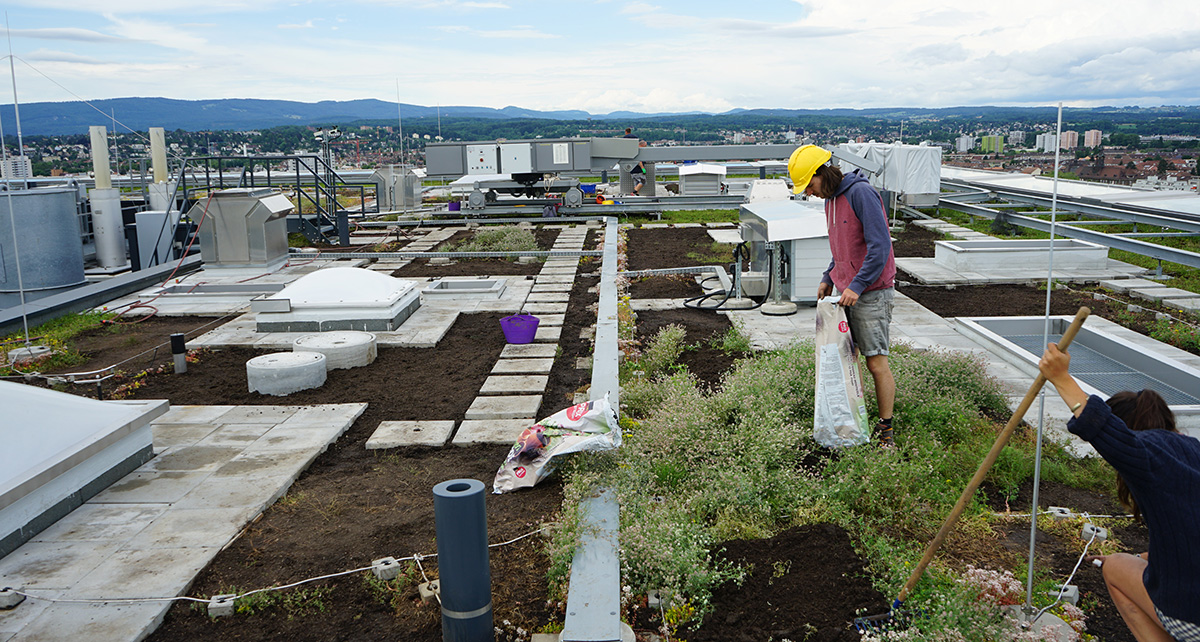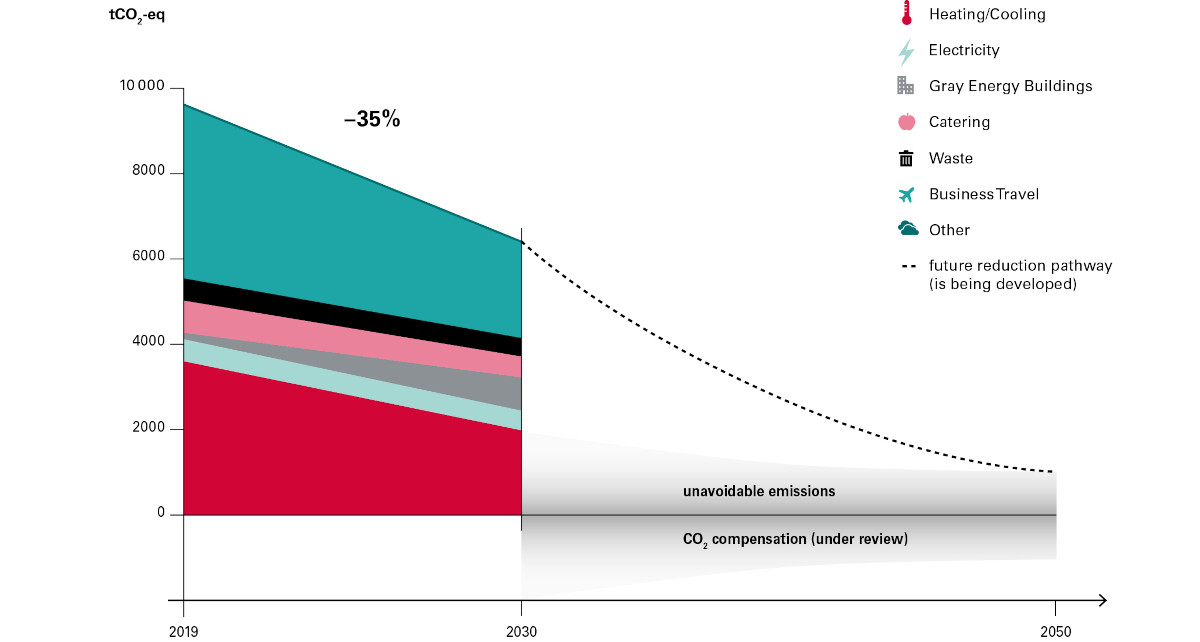Climate Responsibility

In order to help shape the climate future and fulfill its climate responsibility as an institution, the University of Basel has set itself the goal of reducing its emissions by 35% until 2030. The Climate Strategy 2024 - 2030 defines key measures for five priority fields of action (Campus & Management, Mobility, Research & Dialog, Teaching, Engagement & Culture), which are to be implemented by 2030.
In addition to its contributions to research and teaching, the University of Basel has been working continuously for several years to reduce its greenhouse gas emissions in order to contribute to achieving the 1.5° target set out in the Paris Climate Agreement. Important climate protection measures have already been implemented in recent years. The following picture gallery presents some of the projects that have been completed or are currently being implemented.
A detailed carbon footprint of the University of Basel was calculated for the year 2019. In that year, total emissions amounted to 9,665 tCO2-eq.
Climate Strategy
With this in mind, in the summer of 2022, the President's Board established the "Climate Steering Group". This Group consisted of representatives from various faculties and university groups and was tasked with developing recommendations for a greenhouse gas emissions reduction path, as well as the necessary accompanying key measures for the years 2024 - 2030.

The University of Basel's climate strategy reaffirms our commitment to making an active contribution to climate protection and sustainability. Together, we are committed to significantly reducing the University's greenhouse gas emissions by 2030.
Prof. Dr. Dr. h.c. mult. Andrea Schenker-Wicki, President of the University of Basel
Based on the recommendations of the steering group, the University of Basel has set itself the goal of reducing greenhouse gas emissions by an average of 35% across all areas already quantified by 2030, starting from the base year 2019. Offsetting unavoidable emissions from 2030 onwards via negative emissions technologies or compensation projects will also be carefully examined. New goals and measures will be developed in good time for the period after 2030 in order to realise a further reduction towards net zero. To underline these ambitions, the University of Basel has been part of the Education Race to Zero network since 2024. This campaign, which is supported by the United Nations, aims to achieve net zero on a global scale by 2050.
With the aim of incorporating sustainable development into all areas of the university and taking into account societal impact, five priority fields of action were defined for the university. Ambitious but realistic goals and key measures, which are to be achieved by 2030, were developed for these fields of action, .
The fields of action Campus & Management and Mobility result from their relevance for the climate footprint and the university’s role model function. A resilient campus that is adapted to climate change also plays an important role in creating a pleasant and attractive study and work environment.
Through Teaching, the university can empower its students to become change agents for a climate-friendly society by imparting knowledge and transformative design skills.
Strong inter- and transdisciplinary Research on climate and sustainability-related topics provides an important basis for decision-making in politics and business, and it can foster the transformation to a net-zero society. The dissemination of research results outside the academy, and the development of a topic-specific dialog and associated public relations work, improve the University's positioning as an important climate and sustainability player in Switzerland and the Upper Rhine region. The Dialog also increases the University’s attractiveness for new research contracts.
The Engagement of university members and a living Culture of sustainability that is visible on campus are important catalysts for the planned measures. With good communication and incentives, a stronger anchoring in the organizational units can be achieved, which is essential for the successful implementation of the climate strategy.




